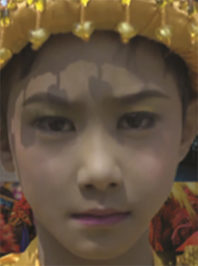
Sacred lets director Thomas Lennon and his collaborators explore religious practices around the world. It’s a kaleidoscope but with a very important twist. See, a normal kaleidoscope uses the different colours and shapes to service a spectrum. But Sacred takes it a step further. The film gives its audience a microscopic view of specific practitioners of the many faiths. Lennon and his 40 fellow filmmakers have another mission in making the film. It also corrects misconceptions about religions that either secular people have.
Criticisms towards this film are understandable. Movies with a global scope have to move quickly. Neck breaking, even, for its audience to digest its wonders. This film does enough of that. But it also chooses to slow that down when it focuses on one of its talking heads. And when it does, it’s important to remember that we’re spending time with one practitioner at a time. These individuals and their natural benevolence seem more cinematic than the leaders who can come with bad reputations. It even clarifies these believers towards other believers of different faiths.
We only see Lennon’s influence through a title card explaining some of the rituals. Or sometimes he shows the town where he’s taking us and the individual talking head we’ll spend some time with. But otherwise Lennon mostly lets his subjects speak for themselves. He finds believers in all stages of their lives, separating the film in three major segments. “Initiation” looks at young people and lets them talk about what their religion teaches them. “Practice” concerns the balance between choosing love and choosing God. And in “Passage,” we see people discuss death.
Prayer figures a lot in “Practice”. There’s a segment where a Japanese couple wish for a baby in a temple. And in that segment we see the couple write their wish on a miniature phallus. The films shows us people like them who want children. We see other individuals who have them but wonder and worry about bringing them into the world. We also see families and rituals torn apart by diseases like Ebola. The film doesn’t just show these individuals’ relationship with God.
What the film also does is tie these believers to the people around them and the people they might never meet. “Passage” shows us Kibret, an old Ethiopian man visiting a pilgrimage site. He explains a ritual in which people take soil from a pilgrimage site. Pilgrims like him use some of it to sprinkle into their eventual graves. This is just a sliver of the breadth of knowledge that the film provides. Those who have not explored other faiths need this. There’s an audience who want to see people who speak about something that means a lot to them.
- Release Date: 6/9/2017


